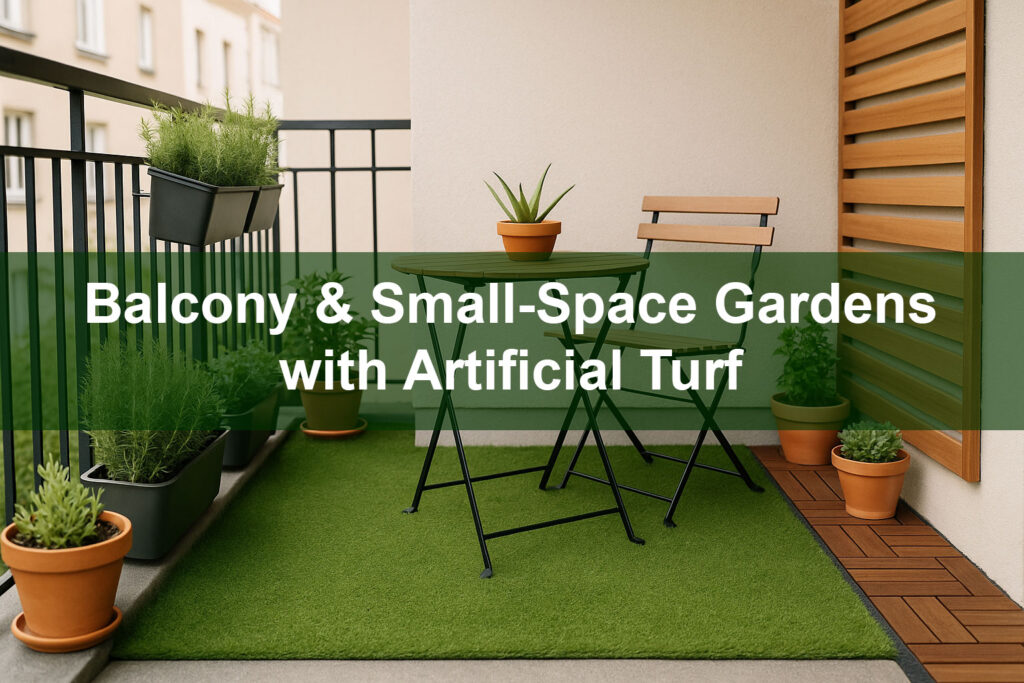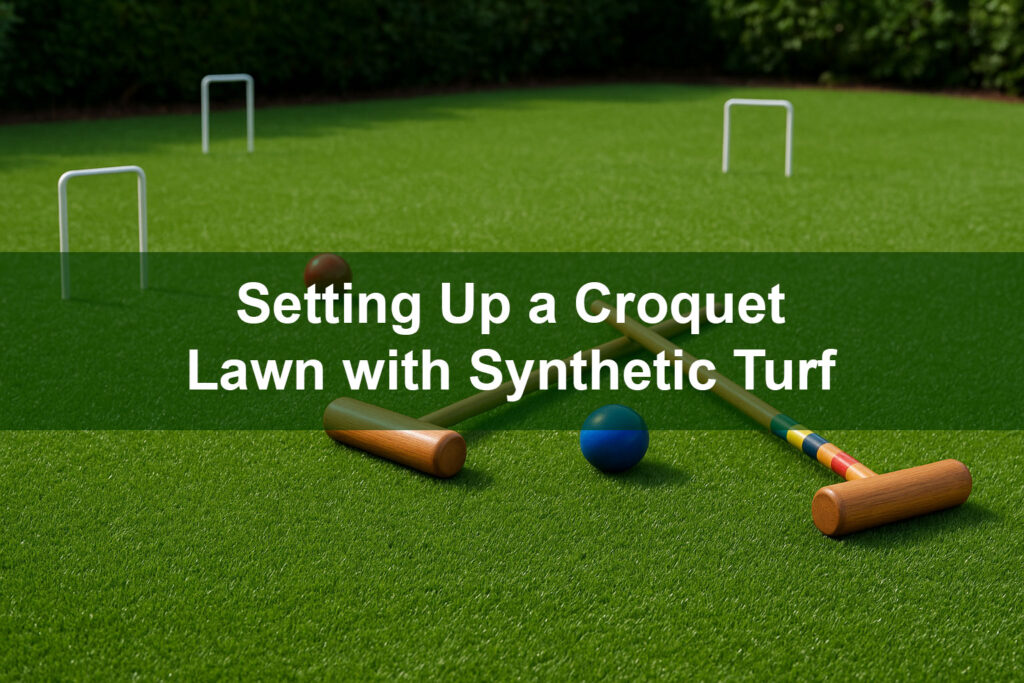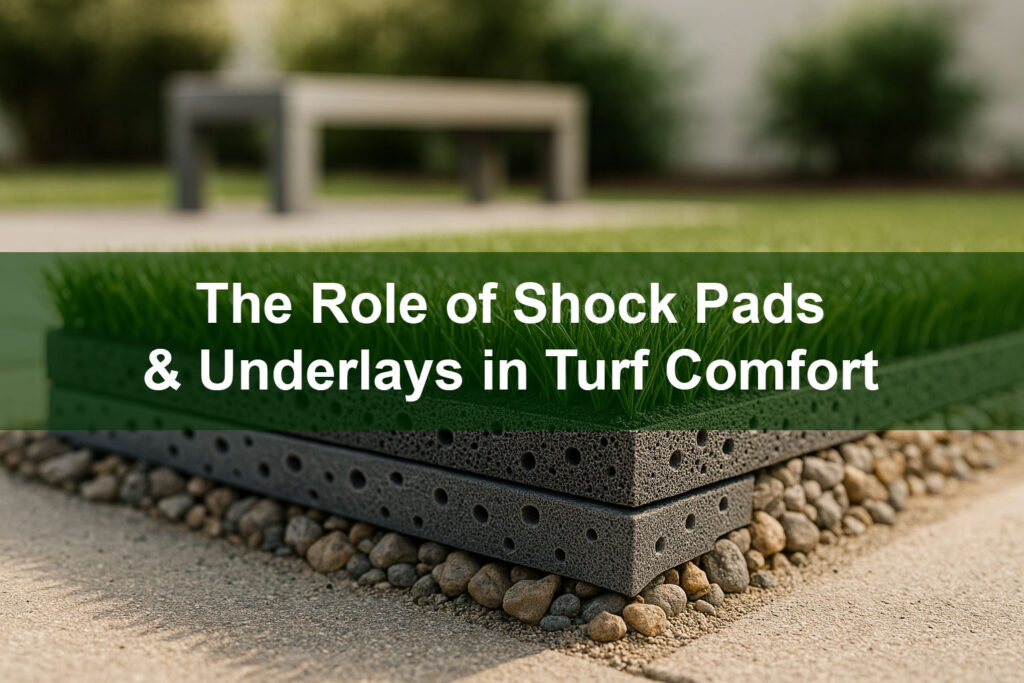What you’ll learn
- Why artificial turf is a strong choice for balcony gardens
- How to choose the right turf product for small spaces
- Design strategies to maximize function and visual appeal
- Installation musts for drainage, weight, and safety
- Low-effort maintenance routines for busy urban dwellers
- Ways to style a balcony garden with planters, furniture, and lighting
1. Why artificial turf works for balcony gardens
Balcony gardens have unique constraints: limited square footage, structural load limits, and the need for easy upkeep. Artificial turf answers these challenges by providing a lightweight, consistent green surface that is easy to clean and doesn’t require soil, mowing, or regular fertilizing. For renters or busy homeowners, turf offers the visual and tactile benefits of a lawn—soft underfoot, reducing noise, and creating a cohesive outdoor room—without the commitments of live turf.
2. Choosing the right artificial turf for small spaces
Product selection matters more in a balcony context because details are magnified in small areas. Consider these product features:
- Pile height: Short to mid pile (10–25 mm) looks tidy, compresses less under furniture, and is easier to brush out.
- Density & backing: High stitch density with a durable backing and integrated drainage holes is essential to avoid water pooling.
- Material: Polyethylene monofilament fibers give a soft, realistic feel while resisting UV fade. Avoid overly plush yarns that will flatten quickly under furniture.
- Weight per square yard: Lighter weight systems are often preferable for balconies—confirm load limits with your building manager or structural engineer.
- Non-toxic & flame retardant: Look for certifications or product datasheets that confirm safety for outdoor use in residential settings.
3. Design strategies for tight spaces
Designing a compelling balcony garden is about proportion, layers, and multifunctional elements.
- Define zones: Even on a 6-foot by 10-foot balcony, create distinct zones—circulation, seating, and planting—so the space feels intentional. A small turf patch can serve as a soft landing for a chair or a kid’s play area.
- Use vertical planting: Wall planters, railing boxes, or trellises add greenery without consuming floor area. Repeat a single plant type in multiple containers for a calm, cohesive look.
- Choose slim furniture: Folding chairs, slatted benches, or stackable stools allow flexibility and save room. Place furniture on a single continuous turf plane to make the area read larger.
- Edge clarity: Use low-profile edging or perimeter trim to keep turf edges neat and prevent soil/planter runoff onto the turf backing.
4. Installation essentials: drainage, weight, and protection
Installation considerations for balcony gardens differ from ground installations. Pay attention to drainage and weight to preserve the building structure and prevent water damage.
- Confirm load capacity: Before installation, check with your building manager or a structural engineer to confirm the allowable live load. Artificial turf systems add weight from the turf itself, any underlayment, and planters or furniture.
- Protect the deck surface: Use a breathable, non-staining underlay or protective mat between turf backing and deck surface to prevent binding and staining, and to allow airflow.
- Drainage path: Ensure water can flow freely to existing drains. Use turf with punched drainage holes and avoid closed backings. If the deck is slightly uneven, introduce a slight slope (1–2%) toward the drain or use modular drainage panels beneath the turf to channel water.
- Modular / interlocking turf tiles: For renters or for easy removal, consider interlocking turf tiles or rollouts that rest on the deck without adhesive. They reduce installation time and protect the deck finish.
- Edge sealing for permanent installs: If you choose a permanent glue-down installation, use an adhesive recommended for your deck surface and ensure seams are tight to prevent dirt accumulation.
5. Planters, irrigation & companion planting
Plants and containers bring life to balcony gardens. Use lightweight planters and smart watering strategies to avoid overloading the deck and to keep the turf clean.
- Lightweight containers: Use fiberglass, thin-gauge metal, or composite planters rather than heavy ceramic pots. Place saucers or trays under pots to catch runoff and prevent staining the turf.
- Self-watering planters: These reduce water runoff and watering frequency—particularly handy for renters or travelers.
- Drip irrigation & timers: A small drip system with a timer keeps plants happy without soaking the turf. Position emitters to water soil only, not the turf plane.
- Plant selections: Choose drought-tolerant, compact plants—succulents, dwarf grasses, herbs, or topiary forms work well in balcony gardens because they occupy small volumes and are easy to maintain.
6. Maintenance: keep it light & regular
One of the biggest advantages of artificial turf is a low maintenance profile, but small spaces benefit from routine care to stay attractive and odor-free.
- Debris removal: Sweep or leaf-blow leaves and debris regularly so they don’t trap moisture against the deck surface.
- Spot cleaning: Hose off spills and pet areas with mild soap if needed. Because balcony gardens are small, spot cleaning keeps the whole area fresh quickly.
- Brush fibers: Use a stiff broom occasionally to lift fibers and keep the turf looking uniform—especially after moving furniture.
- Inspect underlay: For glued systems, check seams and adhesive annually. For modular tiles, lift and inspect the deck surface every season.
7. Styling tips: make your balcony garden feel like an outdoor room
Turn a simple turf patch into a cozy retreat with a few styling choices:
- Rugs & textiles: Add an outdoor rug over the turf for texture and to anchor seating.
- Lighting: String lights, LED strips under planters, or an integrated floor lamp can extend use into the evening and create ambiance.
- Storage solutions: Benches with hidden storage or vertical shelving keep the space tidy and functional.
- Pet considerations: If you have a pet, choose turf rated for pets and create a small, dedicated area for relief that’s easy to rinse.
8. Inspiration & resources
For inspiration and practical how-tos on container gardening and small outdoor spaces, check resources like Better Homes & Gardens: Balcony Garden Ideas. Their ideas for containers and layouts pair well with artificial turf solutions for compact outdoor rooms.
Conclusion: small spaces, big impact
Balcony gardens with artificial turf are a practical, attractive way to reclaim outdoor space in apartments, condos, and tiny-lot homes. Thoughtful product selection, attention to drainage and weight, and smart styling choices will deliver a lush, usable outdoor room that stays beautiful with minimal effort. When you’re ready, choose a turf option that fits your load limits and design aesthetic—then enjoy a little patch of green in the city.
Want help picking the right turf for your balcony garden? Explore our compact-space turf options and modular tile systems at Buy-Grass — visit Buy-Grass.







